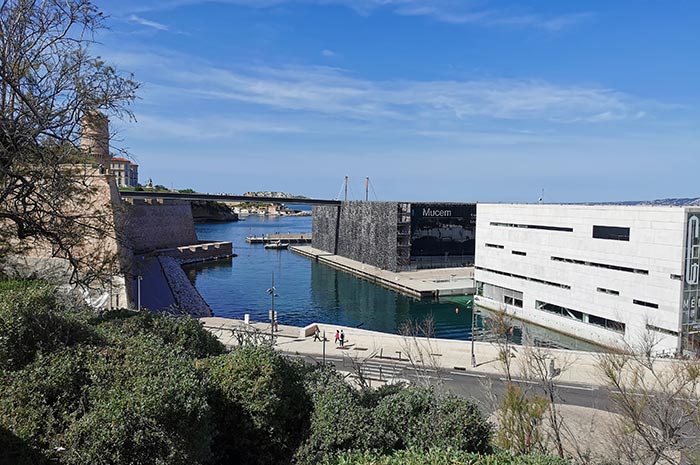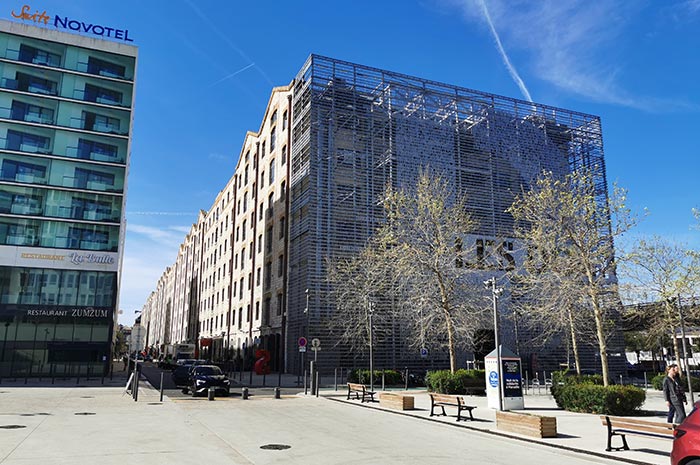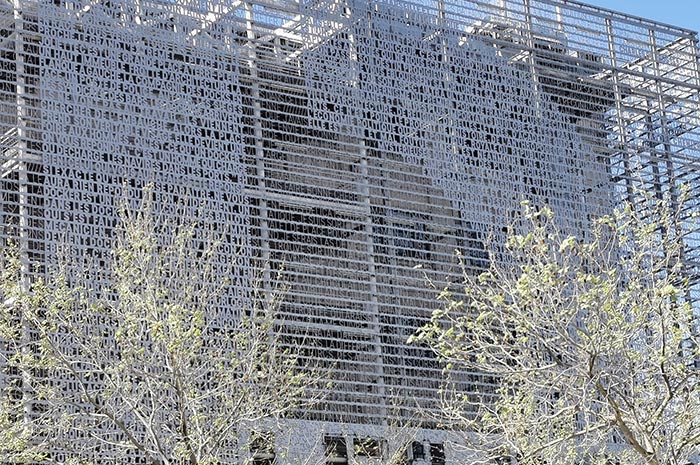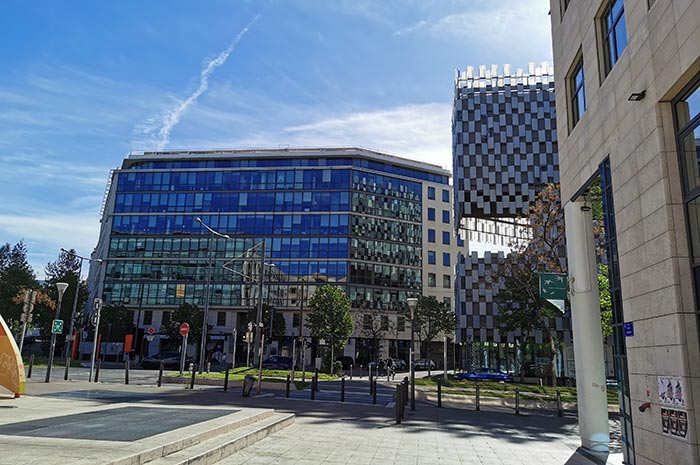First exploration in Marseille – towards Vieux Port
- Written by Portal Editor

After our arrival at Rue de Ruffi in Marseille, there was still time for an initial exploration walk from our accommodation along the Quai du Maroc towards the city center, a path of around 4 kilometers that took us directly along the impressive harbour facilities.

A wide footpath and an equally wide cycle path below and next to the elevated road gave us our first impressions of the important French commercial and industrial center with its excellent transport infrastructure (roads, seaport and airport).

In addition to the port facilities of the Marseille Europort with its huge car ferries, Marseille also has other important industrial sectors in the areas of vehicle, machinery, metal and food industries.

The port is also an important arrival point for millions of tourists every year. In general, Marseille is one of the most visited cities in France with its beaches, history, architecture and culture (24 museums and 42 theaters).
Marseille is also a focus in the artisan production of santons. 35 producers (out of 200 of Provence) live in Marseille. During the Christmas season there is a market on the Canebière that is almost exclusively dedicated to this topic.
A Santon is a Provençal nativity figure made of clay (or mass-produced terracotta). Santons are usually between 4 and 15 cm in size, but there are also 1 cm and 1 m large santons. They are colorfully painted, and some, the more expensive ones, are also dressed in fabric clothes.
Most santons depict characters from Provence and have no direct connection to the Christmas story. So there is the judge, doctor, postman, Tartar woman, the old lady in a Provençal costume, the blind man with the child as a guide and all sorts of residents of a small town. There is also a little story for each character.
The huge ferry port of Marseille is located in the Port Moderne harbor complex, which was built in 1844. It is one of the most important ports for travelers to the Maghreb and Corsica.
Several routes of the companies Corsica Linea and La Méridionale connect Marseille with Ajaccio and Bastia daily; Ile Rousse, Propriano (some with onward journey to Porto Torres in Sardinia) and Porto-Vecchio are visited several times a week.
There are weekly ferry connections all year round with Corsica Linea and Tunisia Ferries to Tunis and with Corsica Linea and Algérie Ferries to Algiers and Oran. Skikda and Annaba are also visited more rarely.
Five-story new buildings were built on the Quai du Port in the 1960s and 1970s. Behind it is another row of residential buildings: Werkbund-Nachlaufer, a kind of elongated, elongated small-scale structure, which is expressed in bay window-shaped brick applications.
Previously, the actual harbor district was located there, a branched network of residential buildings from the 17th century, many small streets and stairs. The Germans who marched into Marseille in November 1942 saw it as a factor of insecurity and a “stronghold” of the Resistance.
In January 1943, after the so-called “evacuation” of almost 27,000 residents to a prison camp near Fréjus, German troops began blowing up the harbor district under the orders of Field Marshal von Rundstedt.
The New Harbor (Port Moderne) stretches behind the Place de la Joliette. The Docks de Marseille located here, 365 meters long warehouses built between 1858 and 1864, were converted into offices, apartments or event venues as part of the Euroméditerranée. On the ground floor there are shops and restaurants that opened in October 2015.
The first “vertical city” of the Unité d’Habitation type, realized by Le Corbusier from 1947 to 1952, was a precursor to prefabricated buildings. The shopping street, café (of the integrated hotel) and roof terrace (with a view of the mountains surrounding Marseille and the sea) are open to the public; The café and restaurant appear to be largely preserved in their original condition and illustrate the grid-like modular construction very well.
Le Corbusier was a Swiss-French architect, architectural theorist, urban planner, painter, draftsman, sculptor and furniture designer. He was one of the most influential architects of the 20th century, but his new ideas also sparked controversy.
Le Corbusier published over 50 books and initiated a modernist urban planning and architecture movement with the CIAM. His concrete buildings founded the architectural style of Brutalism.
Please also read: